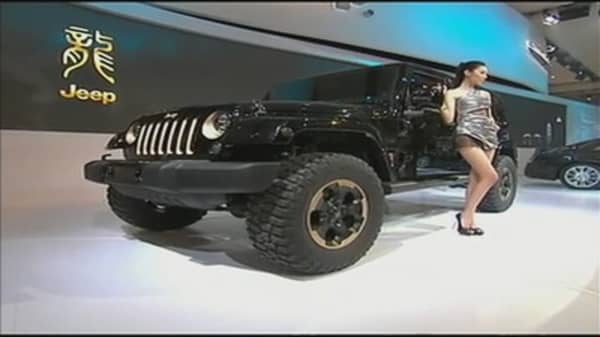"Some are doing a little bit better than others," says Matt Stover, an analyst for Guggenhiem Partners who covers the auto industry. "They're all trying to kick-start their new product programs, but this is the hard part."
Growing Sales, Growing Profits
In the last year General Motors, Ford and Chrysler have each posted solid profits, especially in North America. In 2012, Ford earned $8.34 billion in North America. Chrysler earned $1.7 billion last year, almost all of it coming in its home market. It is also expected when GM reports full year earnings, it will show a profit of more than $8 billion in North America. In short, they have kicked profits into overdrive. It is due to a combination of surging auto sales in the U.S. while lowering costs.
Still, when you look at how the Big Three have done holding onto their share of the U.S. auto market, there are troubling signs.
2012 Market Share
- GM 17.9% (down 1.7%)
- Ford 15.5% (down 1.3%)
- Chrysler: 11.4% (up 0.7%)
- Source: Autodata
In California, the number one market in the U.S., only one of the nine American auto brands actually picked up market share last year. That was Chrysler. Jeep, Dodge and Ram were flat while the rest continued to lose ground in California. This in a year when California auto sales were booming, growing at 25.3 percent, twice the national average.
For years, executives from Detroit have made it a point to say the Big Three will do better winning over California buyers and showing they can compete. Overall, they may be trying hard, but they are not doing very well. Last year, the Big Three sold just 29.7 percent of the new vehicles in California.
The Hard Part
Last year U.S. auto sales surged by 13 percent; a third straight year where business made a double digit gain. In 2013, the pace is expected to moderate to a gain of eight or nine percent, so the days of picking up sales because the market is booming are starting to wind down. Increasingly, the challenge for automakers will be growing sales and profits even as the market slows down.
That's what worries Matt Stover. "The period we're heading into for automakers is going to require very disciplined execution," says Stover. "This is a real challenge for the industry."
When it comes to discipline and execution, the Big Three have a terrible track record. For years Japanese auto makers took market share with a simple play book: build more reliable vehicles. Over the last five years, Detroit has done better and in some cases, their reliability is on par with their foreign counterparts. Now, they have to show they can do the same thing when it comes to driving profits by not building too many cars and trucks and then flooding dealerships with rich incentives to keep sales moving. "Can they (the Big Three) maintain capacity discipline?" asks Stover.
If they can, the Big Three can script some winning plays.
—By CNBC's Phil LeBeau; Follow him on Twitter @LeBeauCarNews Questions? Comments? BehindTheWheel@cnbc.com
Click on company to track corporate news:
•General Motors
•Ford Motor
•Toyota Motor
•Nissan
•Honda Motor





